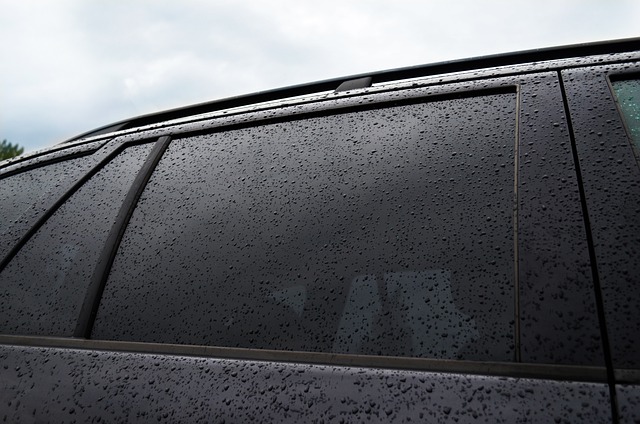Car window tinting is a popular upgrade that combines aesthetic appeal with practical benefits. Whether you’re looking to enhance privacy, reduce glare, or protect your car’s interior from UV damage, choosing the best car window tint can make all the difference. However, not all tints are created equal, and there’s more to consider than just looks. Below are seven essential things you need to know before making a decision.
What is Car Window Tinting?
Car window tinting involves applying a thin film to the interior or exterior of your car windows. This film comes in various types, such as dyed, metallic, ceramic, and hybrid materials, each offering different levels of heat rejection, UV protection, and visual effects. While some people prioritize aesthetics, others focus on functionality, such as reducing interior temperatures or preventing glare. Understanding the types of window tints available is key to ensuring you choose one that meets your specific needs.
The Benefits of Window Tinting
Window tinting offers a host of advantages, making it a worthwhile investment for any vehicle owner:
- UV Protection: Tints can block up to 99% of harmful ultraviolet rays, reducing the risk of skin damage and preventing your car’s interior from fading or cracking over time.
- Heat Reduction: By blocking solar heat, window tints help keep your car’s interior cooler, which can save energy by reducing air conditioning use.
- Enhanced Privacy: Tinted windows obscure the view into your car, deterring theft and enhancing your sense of security.
- Reduced Glare: Whether you’re driving in bright sunlight or under the glare of headlights at night, tints make your journey safer and more comfortable.
These practical benefits make window tinting an appealing choice for drivers seeking both style and substance.
Understand the Legal Limitations
Before getting your car windows tinted, it’s crucial to familiarize yourself with local laws regarding Visible Light Transmission (VLT) levels. VLT refers to the percentage of light that passes through your windows. Each state or country has specific regulations governing how dark your tint can be, especially for front windows and windshields. Failure to comply with these laws can result in fines, penalties, or the need to remove the tint altogether.
To avoid these issues, always consult a professional installer who is well-versed in local tinting laws.
Choosing the Right Tint
Selecting the right window tint involves more than just picking a shade you like. Factors to consider include:
Material Type
- Dyed Tints: These are affordable and provide basic privacy but tend to fade over time.
- Metallic Tints: Offer better heat rejection and durability but may interfere with electronic signals.
- Ceramic Tints: Premium tints that provide superior heat rejection, UV protection, and clarity without signal interference.
- VLT Percentage: The level of tint darkness is a personal choice but must comply with local laws.
- Budget: While higher-quality tints cost more upfront, they often save you money in the long run by lasting longer and performing better.
Working with a reputable installer ensures you get expert advice tailored to your needs.
Professional Installation vs. DIY
You might be tempted to save money by applying a DIY tint kit, but professional installation offers significant advantages:
- Precision: Experts use advanced tools and techniques to ensure a flawless finish without bubbles or wrinkles.
- Warranty: Reputable installers often provide warranties, giving you peace of mind in case of defects or peeling.
- Compliance: Professionals are familiar with legal regulations and can recommend tints that meet local requirements.
While the initial cost of professional installation may be higher, the long-term benefits far outweigh the risks of doing it yourself.
Maintenance Tips for Longevity
Proper care and maintenance are essential to keep your window tints looking their best and functioning effectively:
- Cleaning: Use a soft microfiber cloth and a tint-safe cleaner to avoid scratching the film. Avoid ammonia-based products, which can damage the tint.
- Gentle Handling: Avoid rolling windows down for several days after installation to allow the tint to cure fully.
- Routine Inspections: Check periodically for signs of bubbling, peeling, or fading. Addressing minor issues early can prevent costly replacements.
Following these guidelines ensures your tints maintain their performance and appearance over time.
Potential Drawbacks to Consider
While window tinting offers numerous benefits, it’s not without its challenges:
- Cost: High-quality tints and professional installation can be expensive, though they are often worth the investment.
- Visibility Issues: Darker tints may reduce visibility at night, making it harder to see clearly.
- Legal Risks: Incorrectly chosen tints can lead to legal trouble, especially if you fail to meet VLT requirements.
By carefully weighing these factors, you can decide whether window tinting is the right choice for your vehicle.
How to Get Started
If you’re ready to enhance your driving experience with window tinting, begin by researching reputable installers in your area. Discuss your preferences, budget, and any concerns you have about local laws. A professional installer can guide you toward the perfect tint that balances functionality, style, and legality.
Conclusion
Car window tinting is a valuable upgrade that offers practical benefits, from UV protection to improved privacy and comfort. However, selecting the right tint requires careful consideration of materials, laws, and installation methods. By understanding the process and consulting professionals, you can make an informed decision that enhances your vehicle for years to come. Whether your goal is to beat the heat, boost privacy, or simply add a touch of style, car window tinting is a choice worth exploring.





Comments